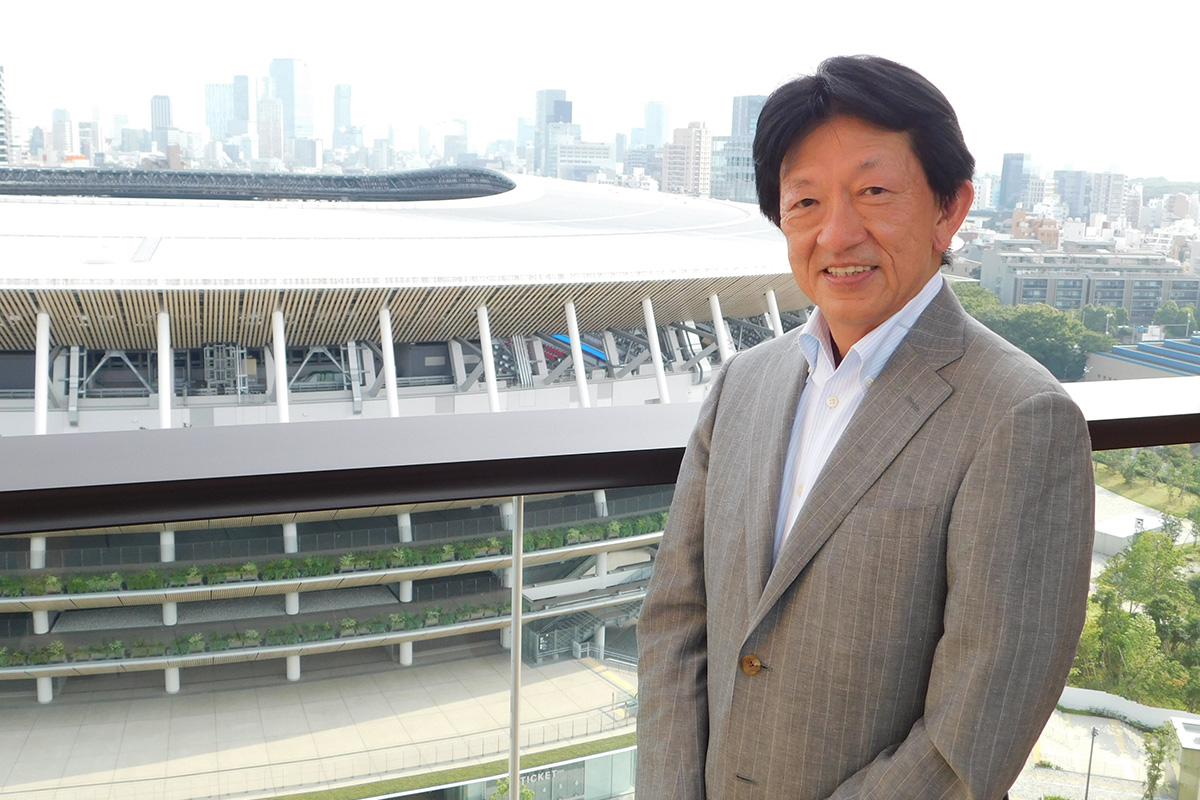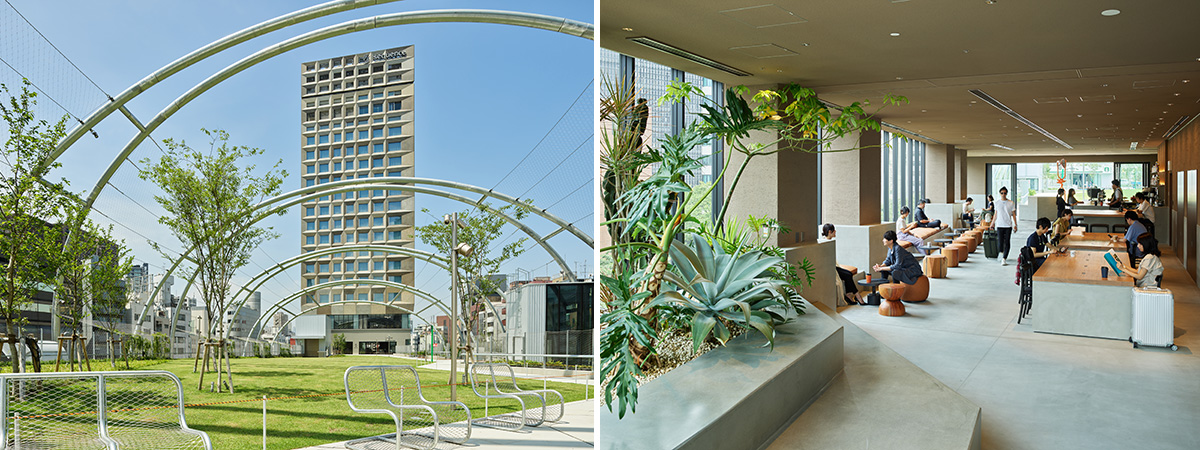Explore Japan's popularity as a tourist destination, driven by its rich food culture, natural beauty, historical sites, safety, anime culture, efficient transportation, and favorable exchange rates. The conversation delves into the challenges of tourism concentration in major cities and the need to attract Western visitors to other regions. Mitsui Fudosan Group's role in promoting regional tourism and the hidden gem of Iseshima are highlighted, along with insights into the Japanese hotel industry and future partnership prospects. Additionally, a suggested seven-day itinerary for exploring Japan is provided.

In 2019 almost 32 million visitors came to Japan; a record year, but of course, this dynamic has significantly slowed down due to the COVID-19 pandemic, although Japan remains number one on the tourism development index with a target of 60 million visitors a year by 2030. Why do you think Japan is so popular and do you think this target of 60 million visitors is realistic without impacting the quality of sightseeing activities?
Historically there have been seven points to the attractiveness of Japan. First, we have the food culture of Japan. The country is fortunate to be blessed with bountiful food resources with chefs who have mastered their craft over many decades now. These craftspeople are providing both aesthetics and taste that are special only to Japan. We are also fortunate that Japan has specialty stores for each of the unique cuisines, for example, ramen shops or sushi bars. These types of specialty stores are helping make Japanese cuisine accessible to visitors.
Another point is nature, and Japan is known for many natural tourist attractions. For example, take the cherry blossom season that occurs around spring, the powdered snow in Hokkaido, or the golden beaches of Okinawa. We have 5 natural world heritage sites in Japan and 34 national parks. These sites help increase the attractiveness of Japan overall.
I think the attractiveness of our country has been woven throughout the country’s long history. Christian culture dates back about 2,000 years, whereas Buddhism and Japanese temples are 1,500 to 1,600 years old. These shrines and temples are a key reason many visitors come to Japan and the country offers over 20 different World Cultural sites, adding to the charm and allure.
Japan is also a very safe and clean society that is full of omotenashi spirit, also known as hospitality. This in fact adds to the attractiveness of Japan with visitors understanding that when they come to Japan, they will be taken care of well.
Anime is surprisingly another attraction bringing in Asians and Westerners alike. Anime and J-pop culture is surging in popularity abroad.
Another aspect that attracts visitors is the transportation systems we have in place here in Japan. The trains here are known for their speed and punctuality, meaning that tourists can get to any location around the nation very easily. There is no other public transportation method like it. In fact, the average delay on the JR Tokaido Shinkansen is 12 seconds annually and this figure includes typhoon suspensions.
Finally, the last attractive point is the current economic situation. With the weak JPY, the exchange is low allowing visitors to do more with their money than before. The common mindset has always been that USD 1 equals JPY 100, but as of November 2023 that is now at JPY 150. For Japanese people traveling overseas, this is a huge struggle, but for overseas tourists coming to Japan, it is a big plus. Add to that the fact that the price of commodities is low such as food, accommodation, and transportation. While it is true that compared to some Asian countries it might seem expensive, however, when compared to some Western countries Japan does seem cheap. Take a ham and cheese sandwich as an example, in Japan that will cost around JPY 200, whereas in Austria that might cost as much as EUR 8.
The seven points you mentioned are a great way to describe why Japan has had such success as a tourism destination in only the past 10 years. Let’s not forget that in 2012 less than 10 million visitors came to Japan. Nevertheless, today the Japanese tourism sector faces two challenges; tourism concentrated in the golden route and how to attract Western visitors. What do you believe needs to be done to tackle these two specific challenges? How can they be addressed by the tourism sector as a whole?
It is true that we see this golden route concentration of visitors focusing only on Tokyo, Kyoto, and Osaka, but as more visitors come to the country, the distribution of people going to smaller regional areas is also growing. This is also true with repeat visitors who tend to want to explore outside of major metropolitan areas on their next visits and I think this has been expedited thanks to word of mouth and the internet.
Another reason for more regional distribution of tourism in Japan is that there are 30 airports that are compatible with international flights, with the past 10 years seeing the privatization of airports. With that, airports are becoming more aggressive with their flights to and from overseas countries. Even areas like Hiroshima, Kumamoto, and Sendai now have direct flights to and from overseas.
The Japanese government is taking active steps to create a seamless transition from major cities to rural areas. This is being achieved by introducing IT systems and online ticketing services for inbound tourists. There are more Asians visiting Japan than there are Westerners and I think this comes down to a few factors. Firstly, the distance is a lot shorter with more flights coming in from major Asian hub cities. Also, there are a few sea cruises that now stop off in Japan. Secondly, there is a cultural affiliation between Asian countries and Japan, with Asians feeling close to Japan and Japanese traditions.
Particularly in my opinion, in Hong Kong, Taiwan, and Korea, traveling means going overseas. They can travel to Japan for just a few nights without tiring from long travel flights.
What does Mitsui Fudosan Group do to help contribute to and promote remote tourism spots? What would you say is the most underrated part of Japan in your opinion?
As one of our approaches, we have a network of hotels across Japan, including regional areas such as Mitsui Garden Hotels located in Sapporo, Fukuoka, and Kumamoto. Having regional hotels helps local tourism.
If I were to recommend a place that I feel is underrated I would like to suggest Iseshima in the Mie prefecture. In particular, the Grand Shrine of Ise is somewhere that I feel is on the same level as Westminster in England or the Monte San Michele in France although it is a bit far away from Tokyo. In fact, Aman Resorts opened in Shima seven years ago, and Aman's architectural team was strongly committed to incorporating the beauty and aesthetics of the Ise Shrine into the hotel. Over the years, the Ise-Shima area has been visited by celebrities and members of the royal family from Japan and abroad.
Ise is well known within Japan by Japanese people, but it is a different story overseas with very few visitors coming from abroad. In fact, in 2019 I personally visited France to do sales for this area. I think that this area has yet to be explored fully by inbound visitors, but with the surging numbers of visitors, we believe that there are plenty of chances for people to see this beautiful part of Japan. The area is particularly known for its bountiful seafood including Abalone shrimp, Matsuzaka beef, and oysters.
Your search for new areas of opportunity has led you to places like Yokohama where you opened a new hotel and announced your first large-scale mixed-use residential and hotel development. When you think about opening a new location what are the main things that you think about? Why did you decide to build your first large-scale mixed-use condominium hotel?
First and foremost, I personally used to work in the development division but nowadays I’m in operations so I’m not exactly in the position to voice the strategic choice of location. However, having seen how the Mitsui Fudosan Group has grown and the locations where hotels are being built, the locations tend to be dictated by the creation of cities. What I mean by that is that if a city has offices, shopping malls, and residential areas then accommodation will be needed. A recent example is the construction of one of our hotels, “sequence MIYASHITA PARK”, with the purpose being to revitalize the park.

RAYARD MIYASHITA PARK (left) | sequence MIYASHITA PARK (right)
RAYARD MIYASHITA PARK is a shopping complex that stretches across 330 meters and features dozens of shops, a side street, and restaurants. Recently a Korean influencer talked about this area with wealthy young Koreans creating a lot of buzz. Basically, we have the park, the commercial facilities, and the hotel all designed to create a holistic service and enhance the value of the area.
Nowadays we are seeing more and more investments from foreigners into high-end Japanese hotel developers. How do these foreign investments impact the activity of the Mitsui Fudosan Group?
Within the Japanese hotel industry, there are many well-known international hotel brands such as the Four Seasons and the Ritz Carlton. In each of these high-end hotels, the owner of the building is Japanese. Brand operations on the other hand are delegated overseas.
Mitsui Fudosan Group has a history of working together with overseas brands such as Ritz Carlton, Bulgari, and the Four Seasons. Mitsui Fudosan is the owner of the buildings, and the operations are run by these overseas companies. We feel that we have a good relationship with these brands and have been able to learn a lot from them.
The Japanese accommodation and tourism industry is very open and welcoming to these overseas brands and this is because by having multiple international brands we can acquire more tourists to Japan, making that target of 60 million visitors by the year 2030 more achievable.
Tokyo, when compared to other major cities of the world, has a lack of 5-star hotels and an oversupply of 3-star hotels. Is your group looking to fill that gap? Do you share this sentiment?
Yes, I’ve heard many people voice this opinion that there aren’t many 5-star hotels in Tokyo when compared to other major cities, but a big point is that there is no specific standard on how a hotel is categorized. Websites like Tripadvisor or Booking.com have their own scheme, so although there aren’t as many 5-star hotels by these standards I don’t think there is a lack of quality hotels.
If you were to compare a 4-star hotel in Tokyo to a 5-star hotel in Europe or America, I think the quality would be similar if not even better. Also, with the amount of competition in Tokyo, there are more 4-star hotels entering the market.
You mentioned partnerships and it is often said during our interviews that partnerships are a good way to boost revenue and attract activity with other hotel groups or travel agencies. What role do partnerships play in your business model and are you currently looking for any new partnerships?
We are strengthening our collaborations within the Mitsui Fudosan Group, and within the group, there are several divisions such as residential departments and commercial department. Further within the commercial facilities department is Mitsui Shopping Park with a few million registered members, so the hope is to collaborate with these member organizations within the group.
Imagine that we were coming to Japan for the first time and were looking for an ideal itinerary. What would you suggest for a seven-day trip to Japan?
Personally, I would suggest two nights in Tokyo, two more nights in Kyoto, and of course Iseshima for two nights. In my opinion, this would be the best route for 6 nights during the autumn season.
0 COMMENTS